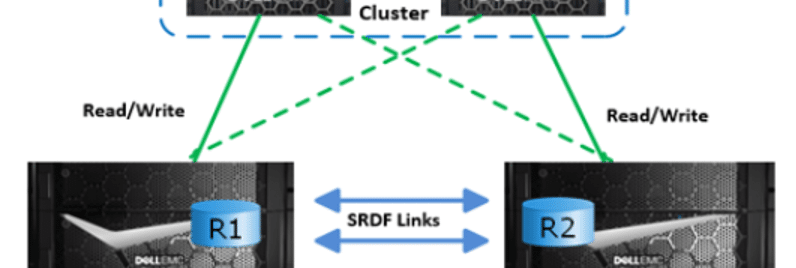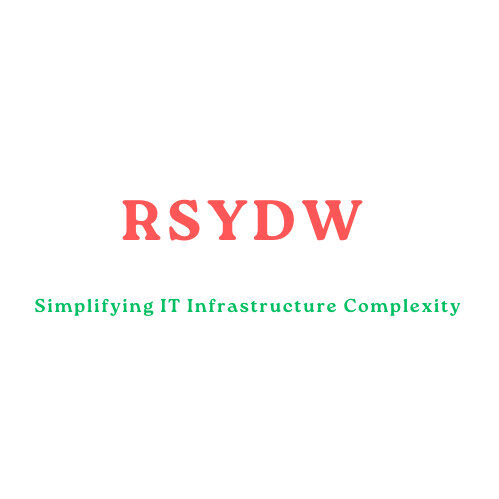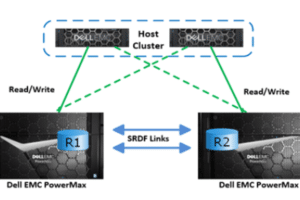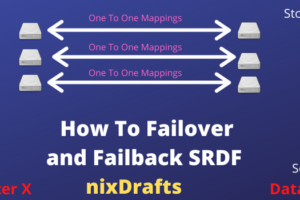|
Getting your Trinity Audio player ready... |

Image Source: EMC
Table of Contents
What is SRDF?
In this article, we will learn what is SRDF? in detail. SRDF is basically a short form of Symmetrix Remote Data Facility. This is an intelligent software system for data replication from one Symmetrix Storage Array to another geographically distant location through a SAN or over an IP network.
SRDF replication can be done for devices between geographically distant locations up to thousands of kilometers as well as theoretically.
Types of SRDF Replication?
SRDF replication is of two types. Synchronization in SRDF happens using two methods Asynchronous & Synchronous. Asynchronous is known as SRDF/A and while Synchronous is as SRDF/F.Let us see more about these ones below.
SRDF Synchronous Mode Replication
In Synchronous Mode Replication – SRDF/F mode source array waits till the target array has acknowledged each writes before the next write is accepted. This is to make sure replicated copy of the data is always as current as the primary.
This really needs a high bandwidth network between the source and target data center which might be costly solutions. Also, latency is expected to increase due to the significantly long distance between the source and target data center.
SRDF Asynchronous Mode Replication
Asynchronous mode replication – SRDF/A maintains a dependent write-consistent copy at arrays at unlimited distances. Source or Primary array immediately writes via production host due to this replication will have no impact on host performance.
Data wrote at the target array typically with a delay of a few seconds behind the primary array. You have the option to define latency based on your network capability.
This technology is suitable for a data center that exists between shorter distances for better performance. This is also known as SRDF/Metro. Practically in SRDF technology devices or groups of devices paired across the data center to provide high availability.
Grouping of devices allows better management. At a time only one side is having to write access. The primary site is known as R1 and the secondary site is denoted as R2.
These pair of devices can be split so separate hosts can access the same data if required. Many other operations can be performed on a group of devices like you can resume the replication between the group of devices.
You can check the status of replication any time you want. Also, you can change the device’s role from R1 to R2 which is called role swapping. Once role swapping happens R1 becomes R2 and R2 becomes R1 which means data replication gets reversed.
Best use of SRDF Replication in Disaster Recovery Solutions for Critical Productions Servers in Enterprise Sector
All these qualities make SRDF Replication best suitable for Disaster Recovery Solutions for Critical Production Applications on UNIX LINUX Servers or even Windows Servers as well.
The basic setup requirement is two sets of identical setup is two different data centers geographically disburse location may be within different cities called Metros.
Conclusion
SRDF Replication software supposed to be used with EMC now Dell Symetrix boxes and similar kind of other option is also provided by Hitachi Storage Systems as well. It depends on which one suits your budget.
That`s it about what is SRDF Replication as of now. I hope you will find this helpful to make you understand.
In case of any further query related to command line examples of how to do particular operations like split resume reverse the role of devices etc.
Please subscribe to our blog for the latest update and post your comment asking specific operations command line example will be glad to share.
Facebook Page Our Facebook Group Our Linkedin Group
Other Articles May Be Of Your Interest
How to Remove Veritas File System



Comments
Pingback: EMC SRDF Commands NIXDRAFTS By RSY Digital World